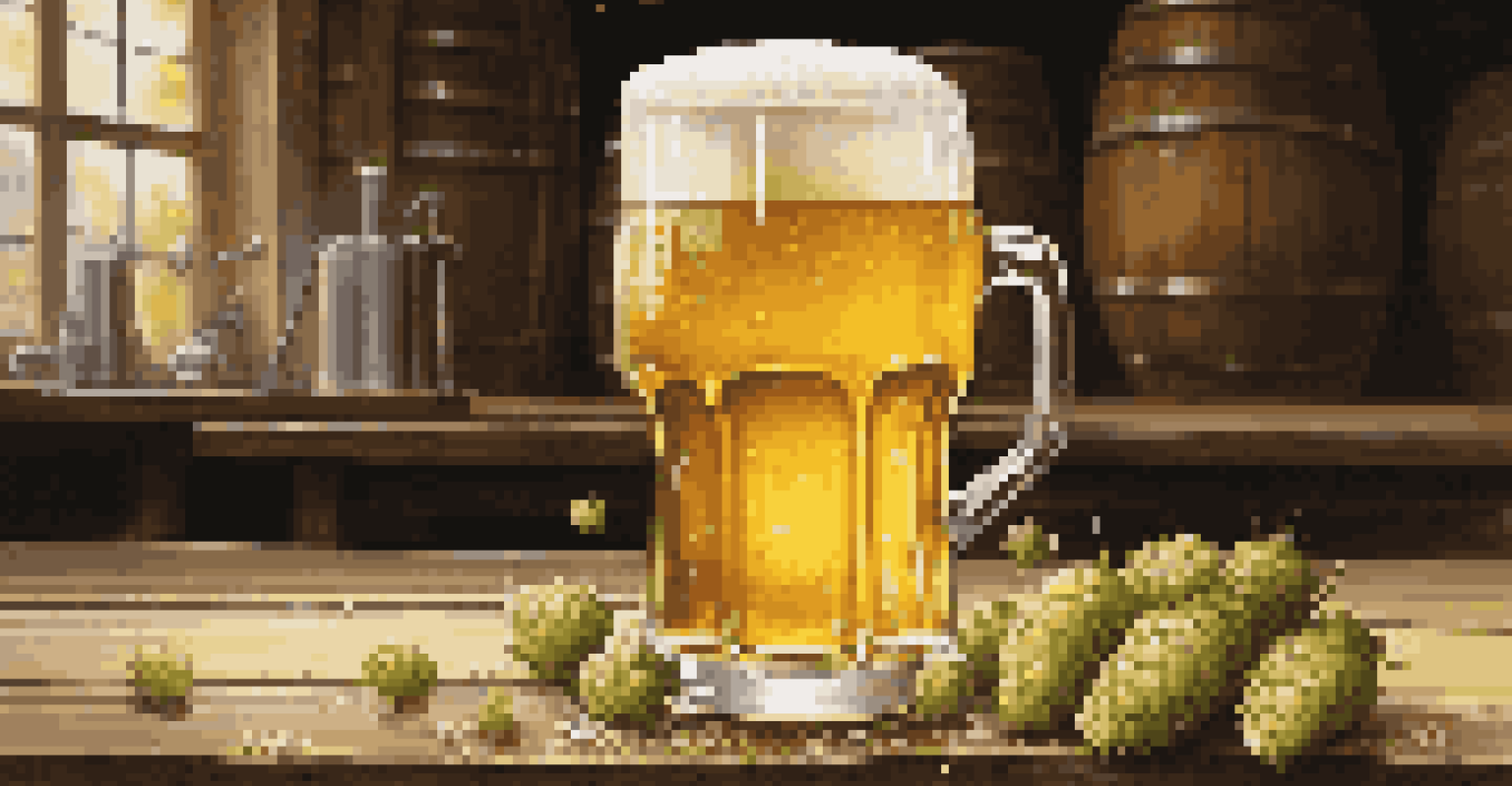How to Build Your Own Home Brewing System: DIY Tips

Understand the Basics of Home Brewing Before You Start
Before diving into the world of home brewing, it's crucial to grasp the basics. Home brewing involves fermenting your own beer, and it can be a fun and rewarding hobby. Familiarize yourself with essential terms like 'malt', 'hops', and 'yeast', as they are the building blocks of your brew.
Brewing beer is a process of continuous improvement; each batch teaches you something new.
Start by learning about the different types of beer you might want to create. Each type typically requires specific ingredients and techniques. This foundational knowledge will guide you in selecting the right components for your own brewing system.
Additionally, joining local home brewing clubs or online forums can provide valuable insights. Engaging with fellow enthusiasts helps you learn from their experiences, making your brewing journey smoother and more enjoyable.
Gather the Essential Equipment for Your Brewing System
Creating your own brewing system starts with gathering the right equipment. At a minimum, you'll need a brew kettle, fermenter, airlock, and bottles. Investing in quality equipment can greatly affect the outcome of your beer, so choose wisely.

Consider purchasing a starter kit that includes all the necessary items. These kits often come with detailed instructions, making it easier for beginners to get started. Plus, they typically offer good value for your money.
Understand Brewing Basics
Grasp essential brewing terms and types of beer to set a solid foundation for your home brewing journey.
Don’t forget about sanitation! Cleanliness is vital in brewing, as unwanted bacteria can ruin your batch. Investing in sanitizing solutions will help ensure that your home brewing process is safe and yields great results.
Choose Your Ingredients Wisely for Flavorful Brews
Selecting the right ingredients is key to crafting your perfect beer. Start with high-quality malt and hops, as these will significantly influence the flavor and aroma of your brew. For beginners, consider following a simple recipe that specifies exact ingredient types and quantities.
Good beer is a conversation starter; it brings people together and creates memories.
Yeast is another crucial component, as it ferments the sugars and creates alcohol. Different yeast strains can produce various flavors and characteristics, so explore options to find what best suits your taste. Don't hesitate to experiment as you grow more confident in your brewing skills.
Finally, consider adding adjuncts like fruit or spices to create unique flavors. These can elevate your brew and allow for creative expression, transforming a simple beer into a signature creation.
Master the Brewing Process Step-by-Step
Brewing beer can seem daunting, but breaking it down into steps simplifies the process. Start by heating water in your brew kettle, then add the malt to create the mash. This critical step extracts the sugars needed for fermentation.
Next, you'll need to boil the mixture and add hops according to your recipe. This boiling process not only contributes bitterness and aroma but also sterilizes the wort, preventing unwanted bacteria from developing.
Gather Essential Brewing Equipment
Collect the right tools and prioritize sanitation to ensure a successful and enjoyable brewing experience.
After boiling, cooling the wort quickly is essential. Use an immersion chiller or an ice bath to bring the temperature down, making it ready for fermentation. This step ensures a healthy yeast pitch, setting the stage for a successful brew.
Fermentation: The Heart of the Brewing Process
Fermentation is where the magic happens in home brewing. Once your wort has cooled, transfer it to the fermenter, add yeast, and seal it with an airlock. This environment allows the yeast to consume the sugars and produce alcohol and carbonation.
Monitor the fermentation process closely, as it typically takes one to two weeks. During this time, bubbles will escape through the airlock, indicating that fermentation is active. It's like watching a science experiment unfold right in your home!
After fermentation, be patient. Allow your beer to condition for a while, which enhances flavor and clarity. This step can turn a good beer into a great one, as it allows the flavors to meld together beautifully.
Bottling Your Brew: The Final Step
Once fermentation is complete, it's time to bottle your beer! Start by sanitizing your bottles and caps to maintain cleanliness. Pour your beer into the bottles, leaving some space at the top for carbonation, and cap them securely.
Consider adding a small amount of sugar to each bottle before capping. This will provide the yeast with extra food, carbonating your beer naturally as it conditions in the bottles. It’s a simple trick that can enhance the overall experience of your brew.
Embrace Experimentation
Home brewing encourages creativity, so don't hesitate to tweak recipes and share your unique creations with others.
Finally, store your bottles in a cool, dark place for a couple of weeks. This waiting period can feel long, but the anticipation makes the first sip even sweeter! Once ready, chill your beer, pour, and enjoy the fruits of your labor.
Experiment and Enjoy: The Joy of Home Brewing
Home brewing is not just about following recipes; it's about experimentation and discovery. As you become more comfortable with the process, don't be afraid to tweak ingredients or try new styles. Each batch is an opportunity to learn and improve your skills.
Keep detailed notes on your brewing process. Documenting ingredients, timings, and outcomes helps you refine your technique and replicate successful brews. It can be a fun way to track your progress and see how your palate evolves over time.

Lastly, share your creations with friends and family! Home brewing is a social experience, and sharing your beer can lead to great conversations and even more brewing ideas. Cheers to your new brewing adventure!